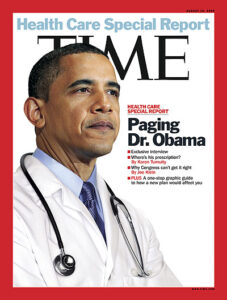 We think of technology as improving productivity on the bleeding edge of change.
We think of technology as improving productivity on the bleeding edge of change.
That means everyone today is focused on Artificial Intelligence.
But big productivity gains are still coming from changes made a decade ago and more.
Take the Affordable Care Act of 2010. Everyone talks about how it increased the number of people covered by insurance, the “Obamacare Exchanges.” But it also included the HiTech Act. At the time I called this the “sweet, sweet stimulus cash” that forced clinics to automate.
Before the ACA, doctors scrawled illegibly on paper charts. They feared automation because it might make them responsible for what the scrawls said. Every doctor ran their own business, controlling patients by controlling their data.
This has changed.
I recently went through a mild case of poison ivy and found out how much. My regular doctor couldn’t see me. Within an hour, I had an appointment around the corner from my house, with a single physician and her paraprofessionals, who had me diagnosed and on the way to a cure by dinnertime.
 Walk Right In
Walk Right In
Automation has taken medicine out of its temple-like offices and put it on the street. Everywhere you turn there’s a clinic. Maybe it’s run by a pharmacy like CVS, or maybe it’s run by a hospital. The one I went to offers an insurance plan. Even Amazon is getting into the act.
This is only possible because data gave physician assistants and nurse practitioners the power to make routine diagnoses and initiate simple treatments. Doctors’ groups are screaming to high heaven, calling this “scope creep,” bringing out industry-funded studies claiming it’s all terribly dangerous.
But it’s productive. If you have a minor medical emergency today, you can be seen. The costs of being seen are coming down. A thumb is being applied to rising medical costs, and competition is growing. The productivity benefits from this automation will keep rising.


 Walk Right In
Walk Right In







